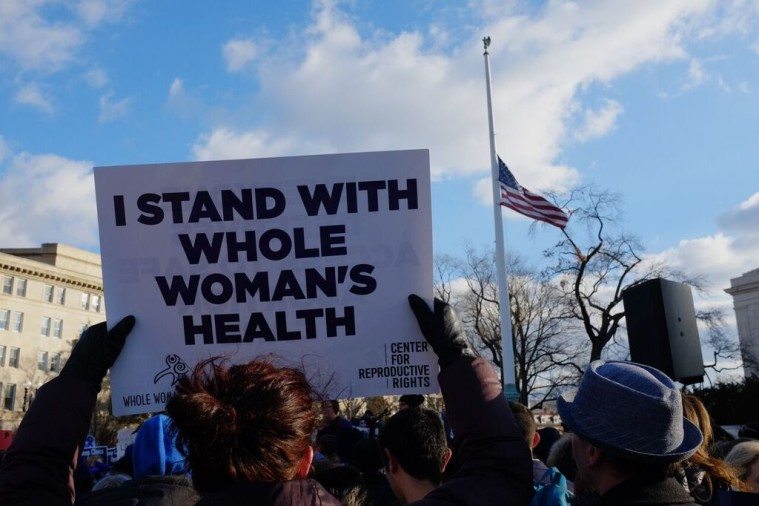
For the first time in almost 25 years, the Supreme Court has encountered an abortion restriction that goes too far.
In Whole Woman’s Health v. Hellerstedt, the Court found that Texas’s regulations constituted an ‘undue burden’ and therefore violated the constitutionally-protected right for women to obtain an abortion. This is a big deal, but also a telling indication of just how close we had come to the edge.
If the Texas laws had been upheld, we would have effectively entered the twilight stages of Roe v. Wade – with abortion technically remaining a protected right, but subject to such a dense thicket of state regulations as to be effectively unusable in significant sections of the country.
That didn’t happen, and that’s important. But this isn’t anything like the last summer, when the Court ended their term by establishing the right to marriage equality—an unvarnished win, at least on the narrow question of marriage. This year, the narrowness of the victory serves as an indication of just how restricted abortion access has become in this country.
While those with money, and those living in the big coastal cities of blue states, are generally able to exercise their reproductive rights with (comparatively) little difficulty, many others are not so lucky. The Court has now ruled against the most egregious laws—designed to effectively shut down all abortion clinics—but said nothing about a wide range of other restrictive statutes, which have closed plenty of clinics themselves, impose a variety of humiliations on those seeking abortions, and make it all-but-impossible for those with limited resources to exercise their rights.
These include: mandatory waiting periods, ‘informed consent’ requirements (such as the transvaginal ultrasound laws), requirements of parental involvement, weak judicial bypass options, building code regulations, etc. Each of these is designed to discourage or limit the ability of women to access abortions.
And beyond such laws, there is another important restriction: the simple reality of cost. While abortion isn’t a particularly expensive procedure, it also isn’t free. And many states prohibit Medicaid funding going toward the procedure, putting it beyond the reach of precisely those who may need it the most.
So yes, the decision today was an important victory. But it’s only a small one. And at the end of the day, it’s unreasonable to expect a whole lot more from the Supreme Court. Absent significant changes in the composition of the Court, the best we can hope for from it is to serve as a backstop, preventing the sort of wholesale restrictions at stake in Whole Woman’s Health.
Real progress on reproductive rights, therefore, depends on positive action in the political realm. There are three key steps here.
- Repeal the Hyde Amendment, the law which has prohibited federal funds from paying for abortions.
- Appoint more liberal judges to the Court. The result today was a 5-3, but this is the first time in decades that Anthony Kennedy found an abortion restriction that went too far, so it would be foolish to count on his vote in any future cases.
- Win back state legislatures. This is where all the action is in abortion restrictions. Republican control of state government allows them to pass a wide raft of restrictions, effectively testing the resolve and attentiveness of the federal judiciary.
There’s also a fourth, and far more abstract step: persuade the American people to move left on abortion. Here, though, it’s worth recognizing just how stable public opinion on this question has been. For all the battles, for all the arguments, for all the vituperative conflicts, the American voters effectively haven’t budged for decades.

That said, you don’t need a sea change in public opinion to shift the margins on abortion access. You just need to win more of the smaller, day-to-day battles at the margins. The public is broadly in favor of legal-but-restricted abortion, but they don’t pay that much attention to the details. Which means this is the sort of area where grandiloquent speeches will accomplish little, but the slow grind of political maneuvering can make a big difference.
In the long run, changing minds is crucial. But that has to be supplemented by a near term strategy of winning small fights that run below the radar of national politics.
And, not to belabor the point too much, but…winning these battles depends heavily on voting for Hillary Clinton (who is campaigning on a repeal of the Hyde Amendment), and for other Democrats.
